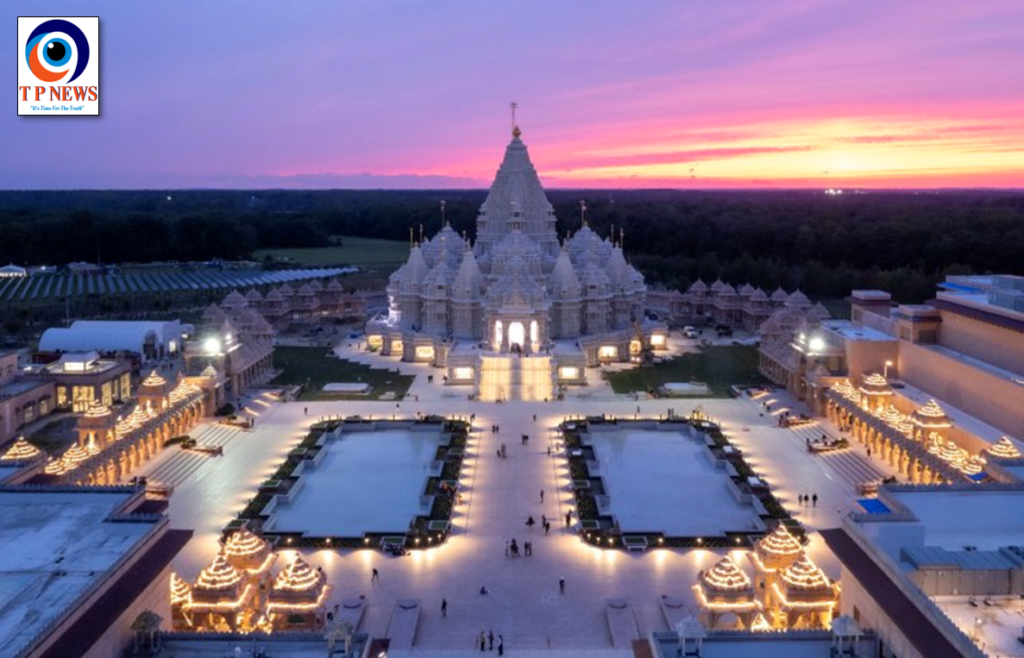In a momentous event, the largest Hindu temple outside of Asia has opened its doors in Robbinsville, New Jersey. Spanning an impressive 183 acres, the BAPS Swaminarayan Akshardham, named after its founding organization, is a marvel that rivals some of the grandest temples in India itself.
The temple’s official inauguration is set for October 8th, with public access commencing on the 18th. This achievement marks a significant milestone for Indian Americans and Hindu Americans, embodying the American Dream for many.
Yogi Trivedi, a temple volunteer and scholar at Columbia University, expressed his awe, saying, “It’s like being transported to another world, specifically to India.” The temple promises to become a pilgrimage site for Hindus from around the globe, offering a sacred haven in the heart of New Jersey.
However, the temple’s journey to completion has not been without controversy. Constructed with the help of 12,500 volunteers from around the world, the Akshardham project faced a labor lawsuit that shed light on labor conditions and allegations of forced labor, grueling hours, inhospitable living conditions, and caste discrimination.

The lawsuit has since been put on hold, with some plaintiffs seeking to dismiss their claims. BAPS Akshardham officials emphasize that the temple will be open to people of all backgrounds, and its walls bear carvings of historical figures like Martin Luther King Jr. and Abraham Lincoln.
The temple’s construction itself is a cultural blend, with materials sourced globally and nods to American history. Local concerns, including the temple’s height, were addressed through community collaboration.
To withstand New Jersey’s winters, non-traditional Bulgarian limestone was used on the exterior, while the interior showcases stones from Greece, Italy, and India. Remarkably, women played pivotal roles in managing the project, a rarity in temple construction.
Yogi Trivedi sees the temple’s design as a reflection of the inclusive community it aims to create. He says, “That kind of inclusivity is not just talked about, it’s actually seen on the walls.”
As this monumental temple opens its doors, it symbolizes unity and diversity while raising important questions about labor exploitation and the balance between religious service and work. It is a testament to the convergence of modern Jersey and ancient India, offering a space of contemplation and celebration for all who visit.














